Musculoskeletal Infections
Musculoskeletal infections encompass a diverse group of conditions affecting bones, joints, muscles, and associated tissues. These infections can be caused by bacteria, viruses, fungi, or parasites. Osteomyelitis, a bacterial infection of the bone, often results from the hematogenous spread of pathogens, direct contamination, or adjacent soft tissue infections. Septic arthritis involves the invasion of infectious agents into joint spaces, leading to inflammation and joint damage. Soft tissue infections, such as cellulitis or myositis, affect muscles and surrounding tissues. Clinical presentation varies depending on the specific type of musculoskeletal infection. Common symptoms include localized pain, swelling, redness, and limited range of motion. Systemic signs such as fever and malaise may also be present, particularly in more severe cases. Early diagnosis is crucial for effective management, often involving imaging studies like X-rays, CT scans, or MRI, along with laboratory tests and cultures.

Francis J Castellino
University of Notre Dame, United States
Ranjan Ramasamy
ID-FISH Technology, United States
Saurabh Chattopadhyay
University of Kentucky College of Medicine, United States
Rico Leonardo Lizbinski
Northern Light Health, United States
Sasha Leibholz
New York Presbyterian Columbia/Cornell, United States
Lauren Gruffi
New York Presbyterian Columbia/Cornell, United States



Title : Pathogen-derived noncanonical epitopes: Are they valuable targets for novel vaccinations and shall we be concerned about autoimmune responses?
Michele Mishto, Francis Crick Institute, United Kingdom
Title : Bioterrorism through the ages: Historical perspective, emerging threats, and medical countermeasures
Claudia Ferreira, Sorbonne University, France
Title : Changing population immunity to COVID-19 in the context of infection, vaccination, and emerging SARS-CoV-2 variants
Ranjan Ramasamy, ID-FISH Technology, United States
Title : Extensively drug-resistant bacterial infections: Confronting a global crisis with urgent solutions in prevention, surveillance, and treatment
Yazdan Mirzanejad, University of British Columbia, Canada
Title : Measles vaccination coverage indicators in 2023 and advance towards measles elimination and eradication by 2030
Pedro Plans Rubio, College of Physicians of Barcelona, Spain
Title : Severe influenza and other related respiratory infection cases during Omicron era in Japan
Masafumi Seki, Saitama Medical University International Medical Center, Japan